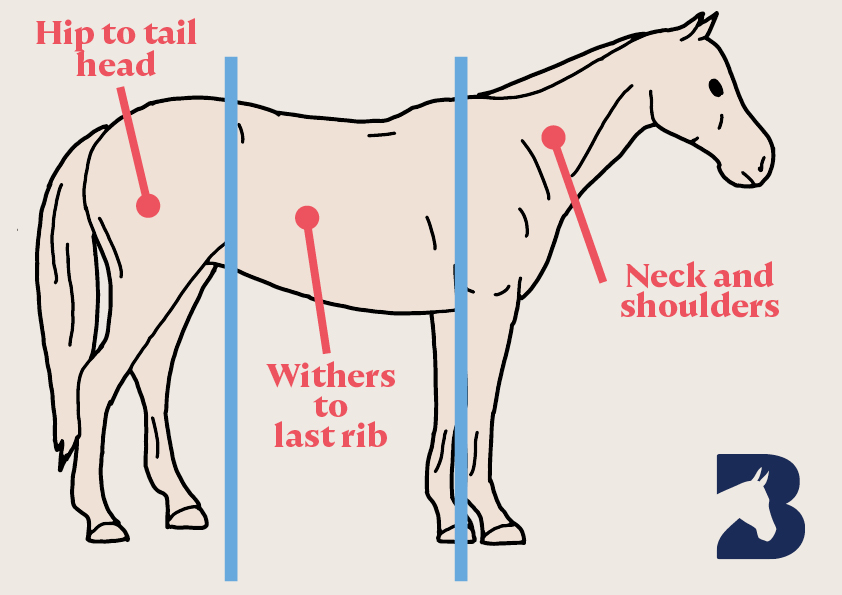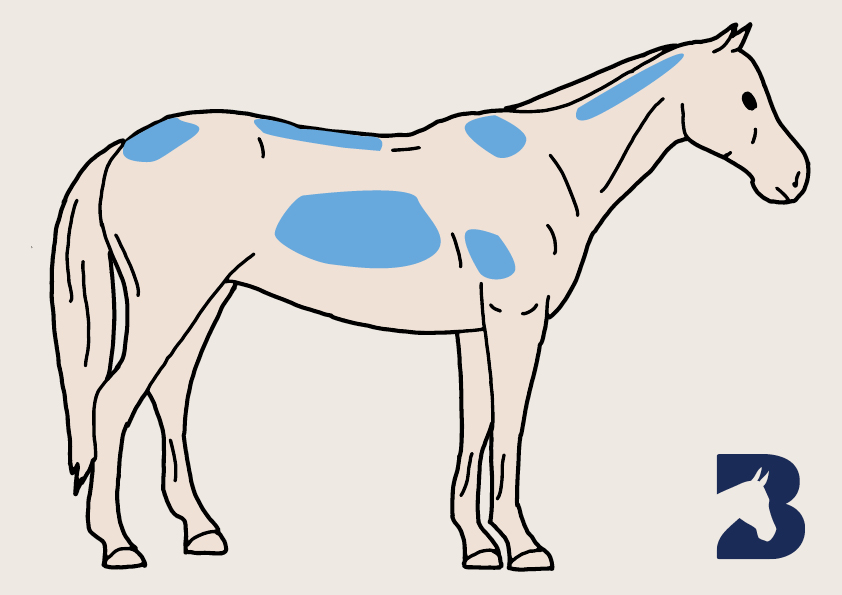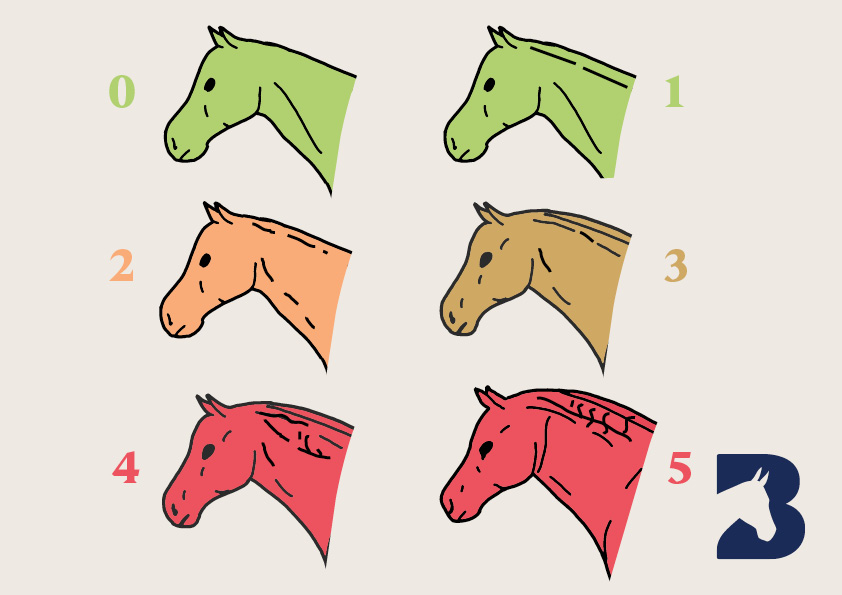- Home
- What We Do
- Equine Advice
- Body Condition Scoring
Body Condition Scoring
Body condition scoring (also known as fat scoring) is an important process of caring for an equine, it can help you better understand the needs of that animal and how you can keep it at a healthy score.
At Bransby Horses, we use the 6-point system that consists of scores from 0-5 (view the chart here) and covers the three key areas of an equine.

How to identify areas of fat
Using your hands (without gloves), you can feel for areas of fat on an equine which will feel softer than muscle. Below is a diagram of where these ‘areas of fat’ are typically laid. Feel your way over the three key areas and compare your horse to the different descriptions at each score on the BCS chart.

Hindquarters
You should be able to just feel the top of the pelvis, the hip bone, and the tailbone. Looking from behind their rump should appear slightly rounded but without a gutter.
Neck
There shouldn’t be any fat or crest above the nuchal ligament as there isn’t any muscle, anything felt here is fat.
Ribs
You should be able to feel the ribs with slight pressure. If you place your hand over their back, it should form a slightly cupped shape. If your hand is flat, there is a build-up of fat either side of their spine causing a gutter, if your hand has created a triangle shape, this is telling you your horse is too thin.
Shoulders
The shoulder blade should be well defined, if you run your hand down the side of the neck, it should come to a stop at the shoulder blade.
How to calculate a BCS and what it means
To correctly determine the BCS of your horse, give each area a score as all horses can carry weight differently. You will need to average the scores to gain an overall rating.
An ideal score would be a 3 unless otherwise advised by your vet. Remember it is natural to have fluctuations in weight during the different seasons, some horses may lose some weight in the winter to then gain some in the spring / summer.
Any score below a 2.5 or above a 3.5 would require careful monitoring and potentially a change in the horse’s management system and diet.
If a horse becomes overweight, it is possible that it could lead to life changing disorders, such as Laminitis and Equine Metabolic Syndrome.
Cresty Neck Scoring
The “cresty neck scoring system” is scored the same as body condition, from 0-5.
A good score is from 0-2, with anything over that needing to be monitored as it could be a good indicator of metabolic disease and insulin dysregulation, as well as laminitis.
If a crest does not reduce with diet and exercise, consider contacting your vet for blood tests. But remember, fat deposits along the neck can be seen more in certain types and breeds, for example, cobs and stallions, it is less likely in thoroughbreds.
Use the diagram below to help you with cresty neck scoring.

Monitoring Body Condition Scores
To monitor a horse’s body condition score, you should:
- Use a weigh tape to monitor your horse’s weight throughout the different seasons.
- Know your horse’s weight as this will help you work out its daily requirement of food.
- Remember a change in management, diet, health, or exercise can affect your horses BCS
- Keep records and take photographs to identify any changes.
It is important to monitor your horses BCS every 2 weeks, you can also use a weigh tape to track your horses’ weight.
It may be possible to arrange for your yard to have a visit from the BHS or a feed company, they may bring a portable weigh bridge to accurately weigh your horse.
Take the quiz
Remember we are here at Bransby Horses to support you with the health and welfare of your horse, if you require further information on any of the above or you would like to discuss your management plan please call 01427 787369 or email welfare@bransbyhorses.co.uk.
